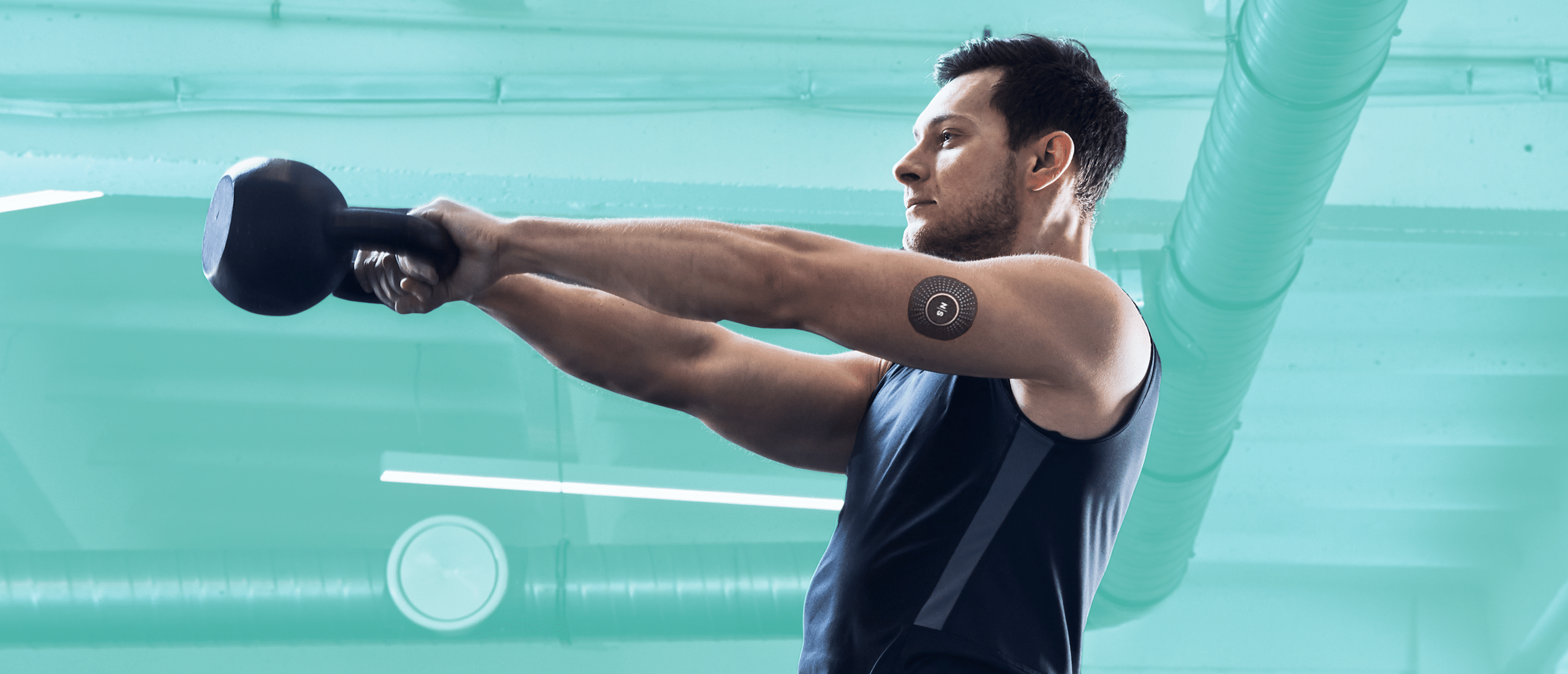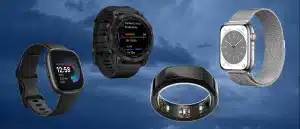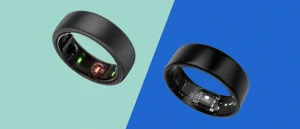Nutrisense Changed the Way I Eat Forever—Does That Make It Worth $299 a Month?
Consistently high blood sugar is an all too common and dangerous issue for a huge number of Americans. The CDC estimates nearly 100 million American adults are living with prediabetes (of which some 80 percent don’t know about it), while tens of millions more are officially Type 2 diabetic. There are a number of realistic interventions a person could embrace before reaching this point, but the most direct is the one many diabetics are already using—continuous glucose monitors, or CGMs. Of the many new companies selling blood sugar monitoring systems, Nutrisense is likely the most robust, with an app that aims to digest blood sugar data and spin it into easy-to-understand means to alter your lifestyle for the better. I tried Nutrisense for three months to find out if it’s worth the money.
What Is Nutrisense?
Nutrisense is a third-party application for continuous glucose monitors. The app connects to a wireless CGM on your body and tracks your blood sugar levels morning, noon, and night. To be clear, Nutrisense is not the maker of the CGM itself; it’s effectively a supercharged version of the apps the CGM makers offer.
Being a Nutrisense customer gets you two things: Abbott’s FreeStyle Libre 14-day CGM and a mountain of blood sugar data. The FreeStyle CGM is a fairly typical one—it’s a little wider than a quarter, fixes onto a low-traffic spot on your body (the back of the arm is most common), and measures blood sugar data every minute. It does this by analyzing your interstitial fluid via a tiny filament that sticks just under your skin. The data is fed to the smartphone app, and uploads by gliding your phone over the CGM. You’ll also get a month of personal nutritionist support through the app; the nutritionist messages you with updates on your blood sugar trends and with questions about your diet and lifestyle, then makes recommendations based on your goals.
How much does Nutrisense cost?
There are three price packages available: $299 monthly for 3 months, $250 monthly for 6 months, and $225 monthly for 12 months. Each package comes with the same benefits and features—a month of nutritionist support ($100 additional monthly thereafter, should you want it), CGMs to cover your subscription period, and access to the app and community. The company used to offer a $399 month-to-month subscription, but that is no longer an option.
Most insurance policies will not cover CGMs, especially CGMs and systems purchased by non-diabetics (Nutrisense’s program explicitly states it is not meant for Type 1 diabetics). You do need a prescription to purchase the CGM through Nutrisense, but Nutrisense processes that prescription in-house through a fairly simple screening process, so you won’t need to see your doctor to get one.
What’s it like wearing a CGM?
Initially, it was rather weird. There’s a small, coin-shaped plastic object stuck to the back of your arm, and that isn’t a feeling most people are familiar with. I experienced a small amount of soreness the first sensor I wore, but very little after that. Occasionally I felt small twinges of discomfort when exercising the muscles around the sensor—like, say, during a bench press when your triceps are finishing the movement—but nothing lasting or serious.
After 14 days, the CGM sensor needs replacing. This takes a few minutes, most of which is spent slowly peeling off the old sensor and trying not to rip out your arm hair in the process. Other than hair follicles being torn asunder, it doesn’t hurt; I didn’t even feel the tiny filament that’s actually in your arm come out.
Speaking of sensor location, I tried a number of alternative places to put the sensor, but the back of the arm proved the best. The thigh felt a little strange and I couldn’t help but knock it occasionally, which forced me to replace a sensor before its 14-day expiration date more than once, for example.
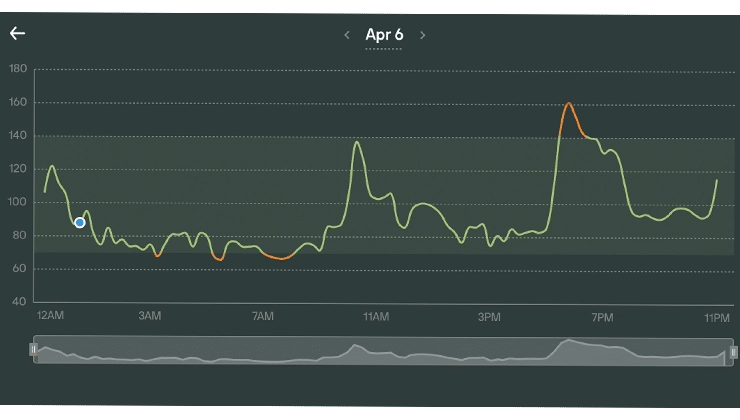
What’s Good About Nutrisense?
Life-changing data
A 2018 study (1) at Stanford tracked the blood sugar levels of 57 seemingly healthy adults with CGMs and found that most saw their blood sugar levels explode to dangerous, prediabetic highs and hypoglycemic lows regularly. Like me, these trial participants were “healthy… without prior diagnosis of diabetes.”
What gives? I’m 30, track my caloric intake, workout most days of the week, and to my best knowledge have no history of diabetes in my family; yet, less than a week into tracking my blood sugar, it was clear there was much to learn.
As it turns out, people’s blood sugar levels respond differently to different foods and activities. There are foods that almost certainly will cause most people’s blood sugar levels to rise (like a candy bar), but your body’s response isn’t always so obvious. One afternoon I had a wedge salad with balsamic dressing on it for lunch, in hopes that the balsamic was a healthier choice than the traditional blue cheese. What I saved in calories I was punished for elsewhere—my blood sugar erupted after eating it. As it turns out, balsamic vinegar is extremely high in sugar. I repeated this exercise numerous times before determining a simple truth: if it comes out of a bottle in the fridge, it’s probably loaded with sugar.
After a few months of personal trial and error and nearing the end of my test subscription, I hit a four-week period of very steady blood sugar control. Almost no spikes above the 140 mg/dL zone and very few dips below 70mg/dL either. My sleep, diet, workout performance, and energy levels all felt improved.
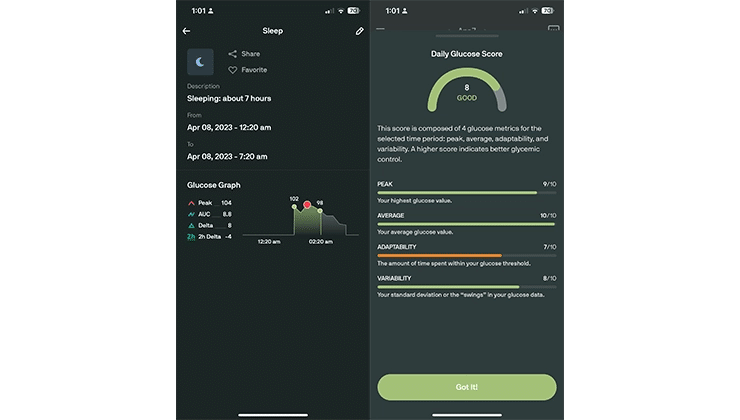
Personal dietician access
Dramatic movement of your blood sugar levels, or glycemic variability, is a root factor contributing to the development of Type 2 diabetes and independent cardiovascular issues (2). Thus, regular big swings in my blood sugar levels felt like cause for concern.
My Nutrisense dietician, which I half-expected to be an AI program, eased my anxiety. One morning before a large, planned workout, I ate a huge helping of French toast with fruit and nuts, and coconut milk. Minutes later, my blood sugar skyrocketed north of 160mg/dL—prediabetic levels you don’t want to hold for too long—and I’d feel ready to hit the gym. Early sets and exercises came and went fast, then weight started to move more slowly. I checked the Nutrisense app and my blood sugar had plummeted below the 70mg/dL low-end threshold, causing me to feel gassed not even halfway through my workout.
The following morning I asked my dietician why this was happening, and what I could do about it. She responded a couple hours later and cleared things up. Basically, eating a mountain of sugar before a hard workout wasn’t my best decision. The sugar sent me roaring into the gym and my body counteracted it with insulin to bring my blood sugar level back down. At the same time, I started working out hard, which also brings your blood sugar down. The effect of both at once was gains-killing exhaustion. Next time, the dietician politely suggested, eat a smaller, less sugar-heavy meal beforehand and fuel during the workout as needed.
Extremely simple setup
The process of acquiring a Nutrisense begins with an evaluation on the company’s website, in which you are quizzed on a series of fairly simple questions regarding your goals using a CGM and your own health history. After, you create an account with your email, select a plan package that suits you, and await the arrival of your CGMs in the mail (about a week and a half in my case).
The CGM itself is fairly typical. It lasts two weeks and you can apply it to your body mostly wherever you want, and without any real education or deep pre-reading required. The CGM comes in a package that looks like a BBQ container from McDonald’s. The sensor applicator, which looks like the cap of a bottle of laundry detergent, snaps into the BBQ container and you’re ready to stick yourself. Despite my being terrified on my first go, it really doesn’t hurt in the slightest. You press down on the sensor applicator in a single, quick motion and you’re set. There’s a slight pinching sensation, followed by a bit of latent soreness while the surrounding muscles get used to the device, then nothing. Syncing the sensor to your app takes 90 seconds if you’re even slightly technologically literate, and, after a few hours of calibrating, you’re ready for your first blood sugar scans.
Gathering data from the device involves pulling up the app on your phone, clicking two buttons, and waving the front of your phone by the sensor on your body. Your phone will vibrate and the data will be visible instantly. Altogether, I expected more discomfort, pain, and tech woes—instead it was very easy and I felt silly for worrying about it at all.
What’s Not Good About Nutrisense?
Heavy financial commitment
The elephant in the interstitial fluid is the cost of Nutrisense. The most affordable option per month is naturally the longest duration package at a full year, which costs $2,700 ($225/month). The most affordable option for cumulative cost is the three-month package, which goes for a shade under $900 ($299/month). Other things that cost this much per month: student loans, car payments, or a month’s worth of groceries. On top of this, it’s an additional $100 monthly (after the first “free” month) to access your personal dietician.
My thoughts on this are as follows: the investment is enormous for most people, but I wouldn’t think of it as a cost you’ll bear forever. If you’re interested in Nutrisense and CGMs generally as a non-diabetic, you’re likely either a health nut already or would like to get a firmer grip on your metabolic health. You can pay for and use Nutrisense for whatever duration you’re comfortable with, learn everything you can from it, and apply those learnings to your day-to-day life afterward. All the data collected, notes taken, and conversations you had with your dietician live in the app even after your subscription expires, so you can always return to it.
Levels, Nutrisense’s most direct rival, is marginally more affordable. It costs $199 monthly, plus a $199 annual fee for membership and access to all the digital perks that come with it. Over 12 months, that’s $2,587 (before tax), which is about $100 less than Nutrisense. The numbers favor Levels more for shorter subscriptions as well—three months of Levels is $796 versus Nutrisense’s $900. January, another consumer CGM software company aimed at non-diabetics, also hovers around these price points.
Using feels like a second job
If you’re going to spend several hundred (or thousand) dollars on Nutrisense, you want to get the most out of it. That means remaining in constant dialog with your dietician, logging your meals in the app, never missing a blood sugar data upload, registering workout sessions, and so on. The app is robust, but your takeaways are limited by your input. I would be lying if I said the constant need to upload data, log activities, and generally dally around the app was a breeze.
In some ways, it’s a reminder of a very privileged position—I don’t have to do all this, and is “all this” really worth whining about? I’m not diabetic, and by the measures available to me I’m not approaching that mark yet. Still, be prepared to fiddle with the app longer than you’d like to get your money’s worth.
Significant learning curve
Metabolic health isn’t always easy to grasp. Foods that should’ve spiked my blood sugar (Rice Krispy Treats) didn’t, and foods I expected to mediate my levels sent it flying (why, chicken tortilla soup?).
Then there’s the app, which I’ve euphemistically described as “robust” when I really mean hard to get a real handle on. There are menus within menus with menus. There are data points of data points. If you’re like me, you’ll have to Google terms and measurement metrics constantly.
As with the “second job” critique, the learning curve critique is born out of Nutrisense’s want to provide the user with absolutely everything they might want. That’s commendable, but it doesn’t mean it’s not at least a bit intimidating.
The Bottom Line
Nutrisense is a tool that, when used to its fullest potential, has the power to significantly alter your eating habits for the better. That said, using the tool to its fullest potential requires a lot of commitment—both in your time and money. If your metabolic health is important to you and you have the means and drive to use Nutrisense, you’d be foolish not to try it.


